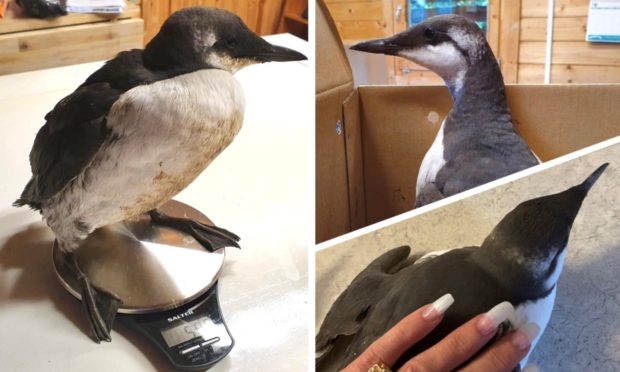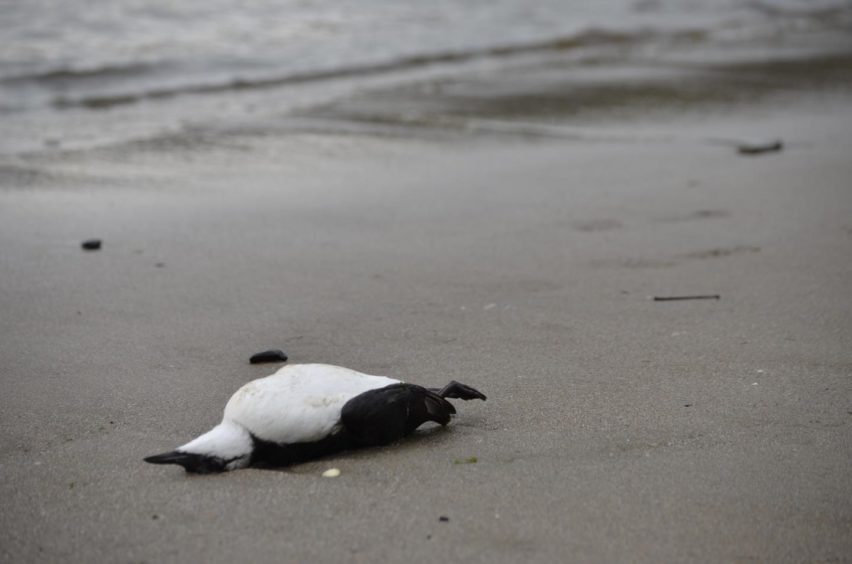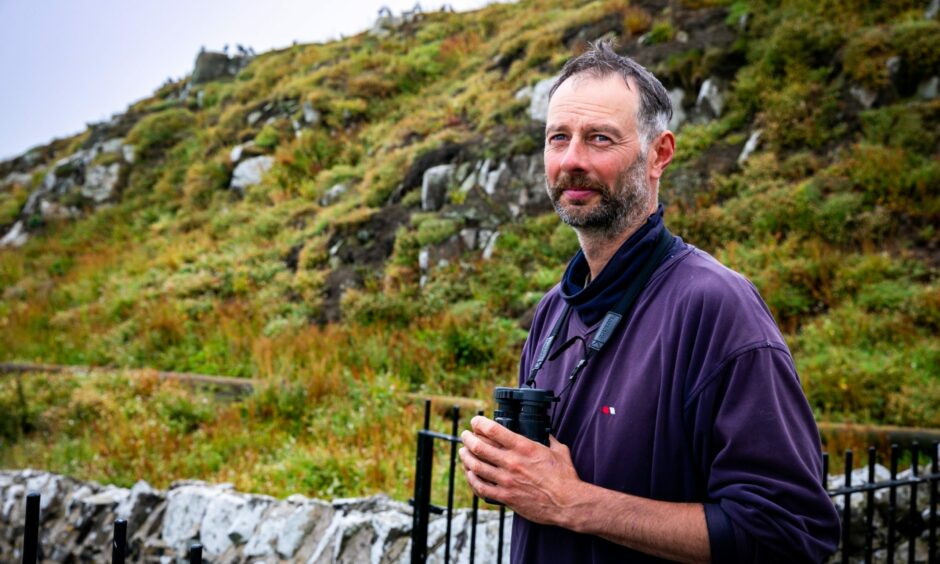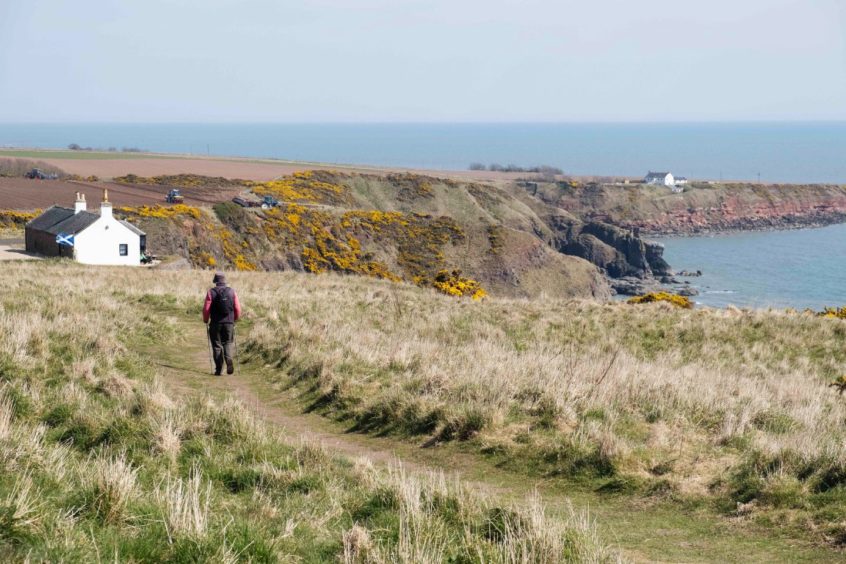Experts are racing to find out why hundreds of dead or starving guillemots are being found on shores across the east coast, with more than 50 recently found at St Cyrus.
The birds have been spotted in trouble in “unprecedented numbers”.
There have been sightings of dead or struggling seabirds around the Forth, along the Fife coast and in Angus.
Some 56 dead or emaciated guillemots were found along St Cyrus coast last week.
What are the possible reasons?
Mark Newell, a marine expert with the UK Centre for Ecology and Hydrology, is part of the team trying to ascertain the cause.
He said it was too early to know for sure, but hopes it is natural.
Toxicology tests have been carried on some birds, but results are not yet in.
One theory is that a possible increase in fish in rivers has encouraged the seabirds to come closer to land. This, in turn, would make sightings of guillemots in trouble more common — even if the actual numbers aren’t drastically different from previous years.
“It’s the time of year for young guillemots to leave their parents and become independent,” Mark said.
“It could be that because this normally happens further out at sea, we are just seeing more of them now because they are closer to the shore, but the actual number isn’t much different.
“We’re finding them about a third of the weight they normally would be, so that’s quite worrying.”
One thing puzzling Mark and the team is that it is mostly guillemots being discovered.
“There are some other birds we’re finding, but the vast majority are guillemots,” Mark added.
Investigation in its early stages
Mark stresses they are still in the data gathering stage and it is too soon to know for sure why it is happening.
But he did rule out a weather event.
“There was a similar increase in birds found back in February, but we know that was weather-related.
“Whereas in recent weeks, the weather has been fairly benign so it’s not storm related.”
Mark said that if anyone comes across a bird on the shore that appears to be distressed, they should contact the SSPCA.
A grim discovery in St Cyrus
The Angus beauty spot has seen a large number of the seabirds, as well as a handful of razorbills and gannets, needing help.
Therese Alampo, manager at the St Cyrus Nature Reserve, said the discovery was “sombre”.
“It’s so sad to see so many dead birds and several thin birds.
“This event extends widely along the east coast and not just St Cyrus, unfortunately.
“I’m sure the relevant organisations will be looking at this event to figure out the reasons and rule anything more sinister out.”
Therese urged people not to touch any dead birds and to report sightings in St Cyrus to her team.
‘Climate change may be a factor’
Paul Walton, head of habitats and species at RSPB Scotland, told the Press & Journal that it is “often impossible” to directly pinpoint the cause of mass “die-offs” after similar findings in Aberdeenshire.
But climate change may be a factor, he admitted.
“Seabirds do on occasion die in numbers at sea and are washed ashore.
“The factors contributing to this are potentially many, sometimes including pollution or disease. Often a period of low food availability – small fish such as sand eels – is a factor.
“When this is combined with stormy weather, weakened birds can succumb and sometimes do so in large numbers.
“The birds… might not be direct climate change casualties, but we are concerned events like this are becoming more common.
“As they do, we should all recognise the climate and nature emergency becoming more visible on our doorstep.”



